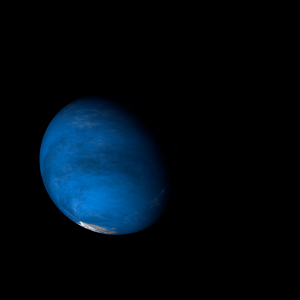|
|
Space Astro
|
Info for exoplanet "Taniathe-tia"
| Scientific (actual) data |
|---|
| Planet | Kepler-181 b |
| Planet status | Confirmed |
| Radius | 0.113 |
| Orbital period | 3.13787 |
| Semi major axis | 0.04 |
| Discovered | 2014 |
| Updated | 2021-02-05 |
| Tconj | 2454970 |
| Impact parameter | 0.16 |
| Publication | Announced on a website |
| Detection type | Primary Transit |
| Alternate names | 2MASS J19443633+5005449 b, K00543.02, KIC 11823054 b, KOI-543 b, KOI-543.02, WISE J194436.31+500544.8 b |
| Star name | Kepler-181 |
| Right ascension | 296.15° |
| Declination | 50.1° |
| Mag j | 13.364 |
| Mag h | 12.948 |
| Mag k | 12.876 |
| Star distance | 620.09 |
| Star metallicity | -0.162 |
| Star radius | 0.75 |
| Star temperature | 5333 |
| Star alternate names | 2MASS J19443633+5005449, KIC 11823054, KOI-543, WISE J194436.31+500544.8 |
| Wikipedia article | Kepler-181 b |
Back
| |
| Fictional info (?) |
|---|
| Suggested name | Taniathe-tia |
| Planet type | Hot planet |
| Taniathe-tia and Kafar Ebe are hot planets rich in ice. When viewed from Kafar Ebe, Taniathe-tia can reach an apparent magnitude of -3, bright enough for its reflected light to cast shadows, and making it on average the third-brightest object in the night sky. This planet is named after the deity Taniathe-tia, the spirit of the underworld.
Taniathe-tia is gravitationally locked with Kepler-181 in a 4:3 spin-orbit resonance, and rotates in a way that is unique in its solar system. As seen from Kepler-181, in a frame of reference that rotates with the orbital motion, it appears to rotate only once every two years.
Its orbital eccentricity is the largest of all known planets in its solar system; at perihelion, Taniathe-tia's distance from Kepler-181 is only about two-thirds (or 99 pct) of its distance at aphelion.
Optical ground-based telescopes are typically limited to resolving features about 195 kilometers across when Taniathe-tia is closest because of Earth's atmosphere.
In 1092, images from Daedalus 8 showed Taniathe-tia as an almost featureless planet in visible light, without the cloud bands or storms associated with the other hot planets. |
| Atmosphere | Ammonium hydrosulfide (NH4SH) | 50% |
| Nitrogen | 47% |
| Hydrogen chloride | 2.9% |
| Atmospheric pressure | 0.07 bar |
 |
| No known satellites |
| Google search for Taniathe-tia |
|
Website by Joachim Michaelis
|
|
|
|